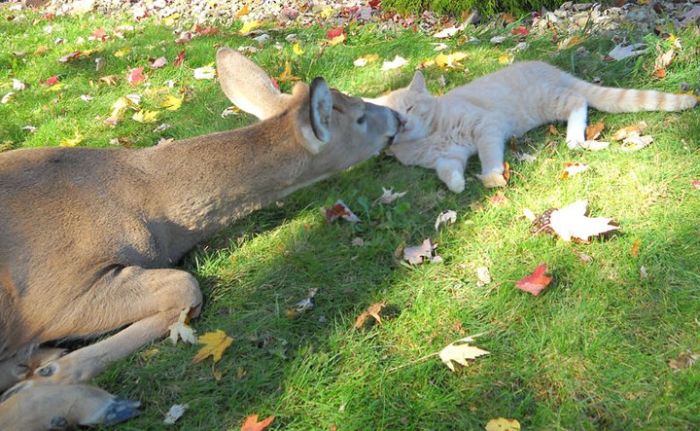|
|
Cat And A Little Deer
|
The highest concentration of large deer species in temperate Asia occurs in the mixed deciduous forests, mountain coniferous forests, and taiga bordering North Korea, Manchuria (Northeastern China), and the Ussuri Region (Russia). These are among some of the richest deciduous and coniferous forests in the world where one can find Siberian Roe Deer, Sika Deer, Elk, and Moose. Asian Caribou occupy the northern fringes of this region along the Sino-Russian border.
Deer such as the Sika Deer, Thorold's deer, Central Asian Red Deer, and Elk have historically been farmed for their antlers by Han Chinese, Turkic peoples, Tungusic peoples, Mongolians, and Koreans. Like the Sami people of Finland and Scandinavia, the Tungusic peoples, Mongolians, and Turkic peoples of Southern Siberia, Northern Mongolia, and the Ussuri Region have also taken to raising semi-domesticated herds of Asian Caribou.
The highest concentration of large deer species in the tropics occurs in Southern Asia in Northern India's Indo-Gangetic Plain Region and Nepal's Terai Region. These fertile plains consist of tropical seasonal moist deciduous, dry deciduous forests, and both dry and wet savannas that are home to Chital, Hog Deer, Barasingha, Indian Sambar, and Indian Muntjac. Grazing species such as the endangered Barasingha and very common Chital are gregarious and live in large herds. Indian Sambar can be gregarious but are usually solitary or live in smaller herds. Hog Deer are solitary and have lower densities than Indian Muntjac. Deer can be seen in several national parks in India, Nepal, and Sri Lanka of which Kanha National Park, Dudhwa National Park, and Chitwan National Park are most famous. Sri Lanka's Wilpattu National Park and Yala National Park have large herds of Indian Sambar and Chital. The Indian sambar are more gregarious in Sri Lanka than other parts of their range and tend to form larger herds than elsewhere.
The Chao Praya River Valley of Thailand was once primarily tropical seasonal moist deciduous forest and wet savanna that hosted populations of Hog Deer, the now-extinct Schomburgk's Deer, the Eld's Deer, Indian Sambar, and Indian Muntjac. Both the Hog Deer and Eld's Deer are rare, whereas Indian Sambar and Indian Muntjac thrive in protected national parks such as Khao Yai.
|
|









